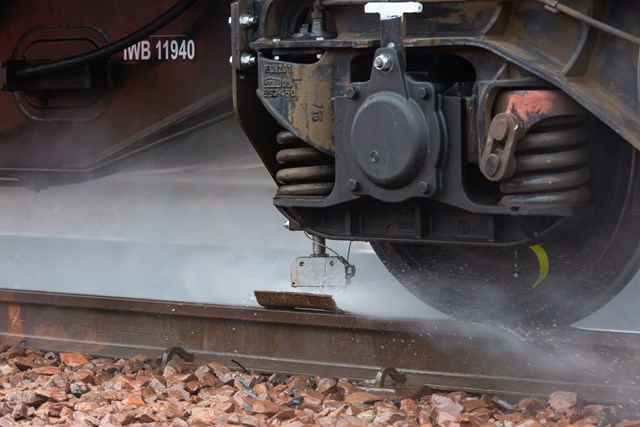I'm going to show my insight and knowledge of the subject here, but, why don't we fit trains with brushes that brush the leaves off the line, a sort of rotating shoe buffer type thing, that is cleaned as it operates, to mechanically removed the residue and leaves causing the issues...?
With several hundred tonnes of pressure being applied to the leaves, creating the teflon like problem, you'd need a very tough, high speed buffer to do that job, and that would probably damage the railhead in the process, as well as likely being damaged by points and crossings, as well as rail joints, and probably wear out very quickly too even if it didn't cause damage, or just get caked in the contamination. For comparison the water jets typically operate at 1500 bar, close to 22,000 psi, to be effective and will easily cut steel within a few seconds if at a stand.
Where you can use it are on smaller scale buffers, operated 'by hand' (chainsaw type engine), they're often quite large cumbersome things, taking up both rails, or sometimes resemble an overgrown leaf blower, but they operate at walking pace at best, any quicker and they do nothing, and as the railhead isn't a flat surface often need multiple passes to get the job done (think sanding a curved banister with an electric sander). It's very slow, time consuming, and naturally needs a line blockage in place to use, so they're only used to target particular trouble spots that usually won't be dealt with by an RHTT. They're not something that could be used on board a train.

